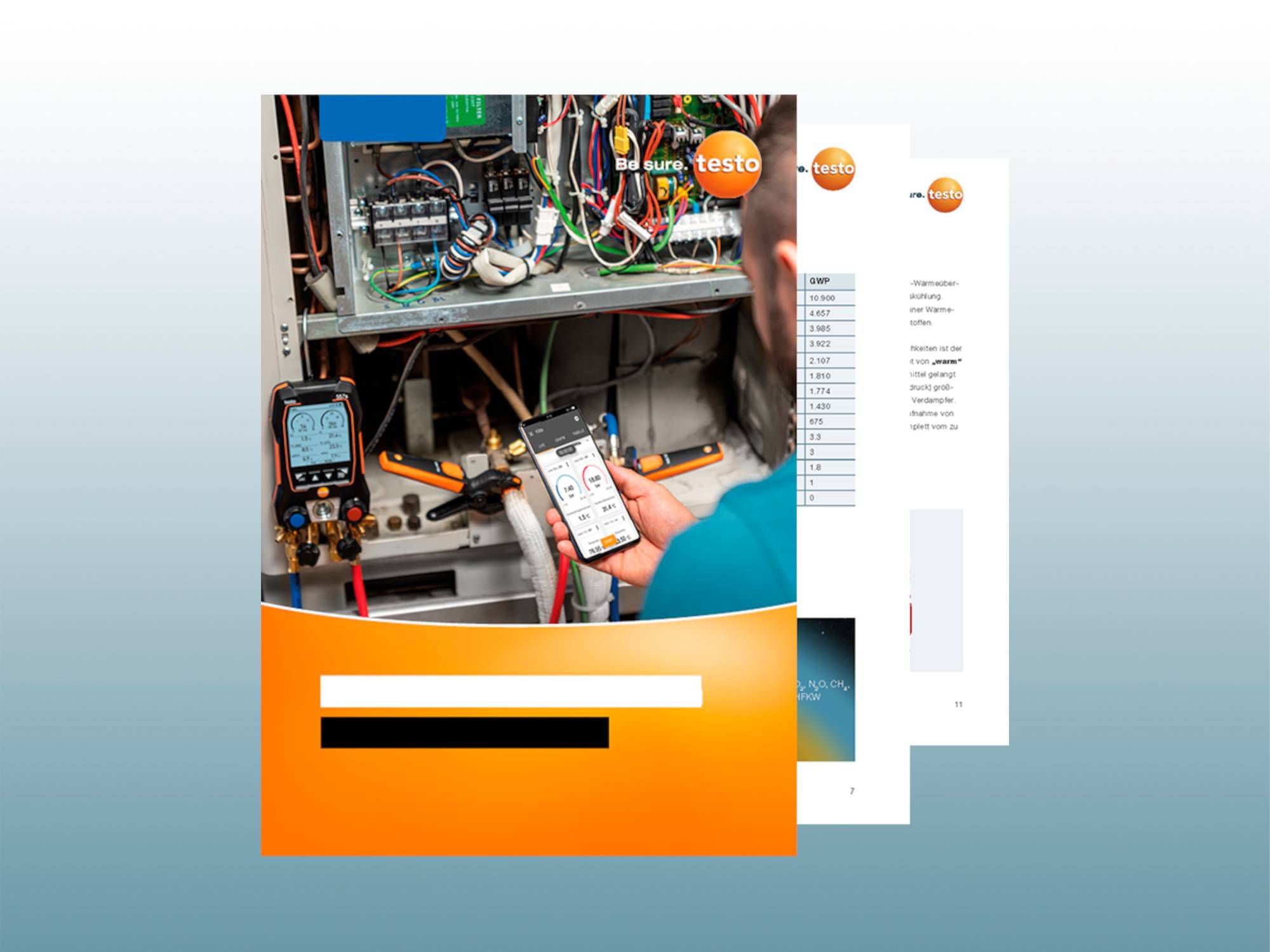Reading sample Refrigeration Knowledge – Module 1: Understanding refrigeration systems
Refrigeration systems have become indispensable in various areas of our daily life. They ensure optimum air conditioning of buildings, cool industrial processes and enable longer storage and freezing of food. However, the advantages of refrigeration systems are accompanied by a significant consumption of resources which is constantly growing all over the world and affecting the climate. This makes it all the more important to plan systems for refrigeration and air conditioning technology professionally and operate them efficiently. A refrigeration system is a closed, and ideally hermetically sealed, pipework system in which refrigerants circulate.
A refrigerant is an operating medium which takes up heat at a low temperature and low pressure and gives off heat at a higher temperature and higher pressure. These so-called compression refrigerant circuits comprise at least four main components which will be briefly described in greater detail below. The refrigeration system's operating media are the refrigerant and the oil in the compressor. Their selection is based on the respective application in conjunction with environmental impacts.
In this respect, the following must be incorporated into the evaluation and selection:
- the manufacture of the components,
- the potential risk of the operating media in the event of a leak or accident,
- the operating power needed to provide the refrigeration and
- the disposal of the system technology after its operating life.
1.1 Characteristic values for the efficiency of refrigeration systems
A good comparative value for heat pumps is the COP (Coefficient Of Performance) or the EER (Energy Efficiency Ratio) for refrigeration systems. These performance figures reflect the benefit-cost ratio at a special operating point of the system at a defined point in time.
If you wish to consider the efficiency of the refrigeration system over a whole year, the SEER (Seasonal Energy Efficiency Ratio) is of greater significance. In this case, the evaluation also includes the partial load operation of the refrigeration system in addition to the full load operation and design point. The very different ambient conditions which occur in the course of a year mean consideration of the partial load is particularly important.
Efficient performance regulation of the refrigeration supply (frequency converter for performance regulation of the compressor and speed regulation of the condenser or heat exchanger fans) is a must! Additional and complementary use of thermal storage media (e.g. ice storage units) can compensate for partial loads or extreme peak loads and ensure higher operational reliability and better system availability.
That was only a small excerpt. Would you like to read more?
If so, simply request the complete Refrigeration Knowledge.
It only takes a minute and you will benefit from 2 more modules and these sections:
Request here
Content
Module 1: Understanding refrigeration systems
1.1 Parameters for the efficiency of refrigeration systems
1.2 Criteria for practicable refrigerants
1.3 Evaluating refrigerants a) The GWP value b) The TEWI value
1.4 Planning and efficient operation of refrigeration systems
Module 2: Principles and main components of refrigeration technology
2.1 Thermodynamics
2.2 The four main components of the compression refrigeration circuit
2.2.1 The evaporator
2.2.2 The condenser
2.2.3 The compressor
2.2.4 The expansion unit
2.5 Other important components in the refrigerant circuit
Module 3: Correct measurement on refrigeration systems
3.1 Recording and evaluating important parameters
3.2 Subcooling
3.3 Superheating
